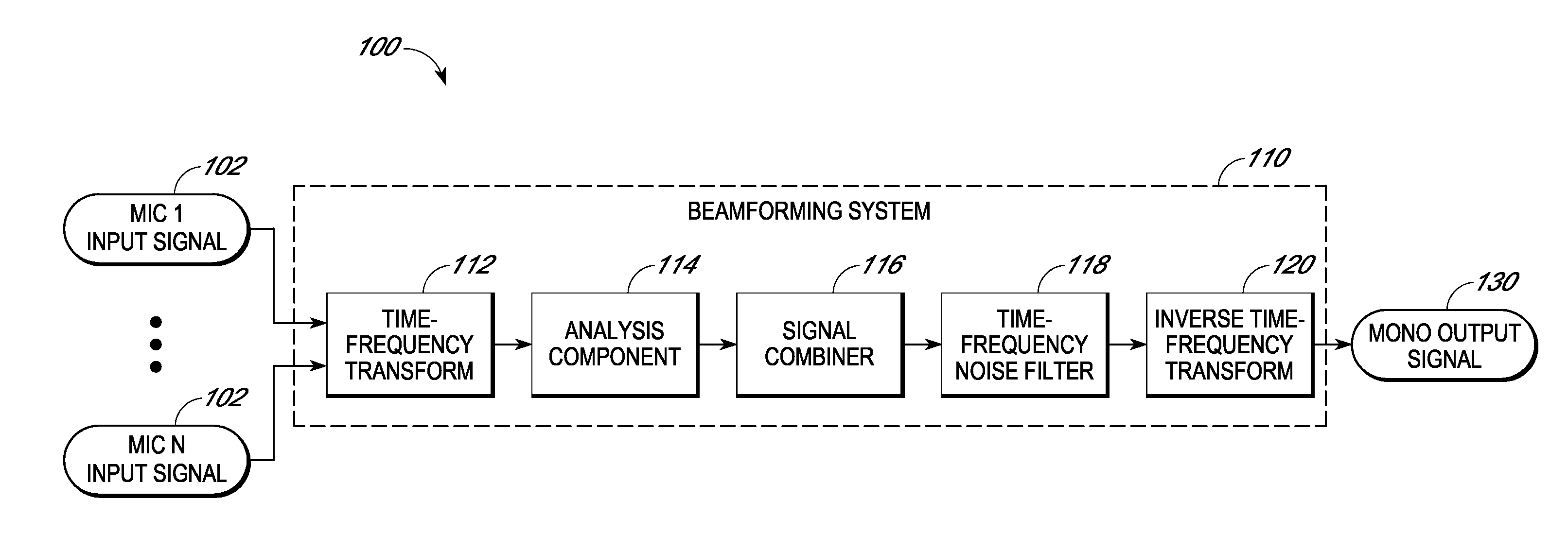Microphone array processing system
a processing system and microphone technology, applied in the direction of transducer casings/cabinets/supports, transducers, electric transducers, etc., can solve the problems of large computational complexity of adaptive filters, less robust than desired, and the technique typically involves adaptive filters
- Summary
- Abstract
- Description
- Claims
- Application Information
AI Technical Summary
Benefits of technology
Problems solved by technology
Method used
Image
Examples
Embodiment Construction
I. INTRODUCTION
[0022]An alternative to the single microphone setup is to provide a microphone array of two or more microphones, which may (but need not) be closely spaced together. Having the sound signal captured from multiple microphones allows, with proper processing, for spatial filtering called beamforming. In beamforming applications, the microphones and associated processor(s) may pass through or amplify a signal coming from a specific direction or directions (e.g., the beam), while attenuating signals from other directions. Beamforming can therefore reduce ambient noises, reduce reverberations, and / or reduce the effects of electronic noise, resulting in a better signal-to-noise ratio and a dryer sound. Beamforming can be used to improve speech recognition, Voice-over-IP (VoIP) call quality, and audio quality in other recording applications.
[0023]One drawback to currently-available beamforming techniques is that such techniques typically involve adaptive filters. Adaptive fil...
PUM
 Login to View More
Login to View More Abstract
Description
Claims
Application Information
 Login to View More
Login to View More - R&D
- Intellectual Property
- Life Sciences
- Materials
- Tech Scout
- Unparalleled Data Quality
- Higher Quality Content
- 60% Fewer Hallucinations
Browse by: Latest US Patents, China's latest patents, Technical Efficacy Thesaurus, Application Domain, Technology Topic, Popular Technical Reports.
© 2025 PatSnap. All rights reserved.Legal|Privacy policy|Modern Slavery Act Transparency Statement|Sitemap|About US| Contact US: help@patsnap.com



